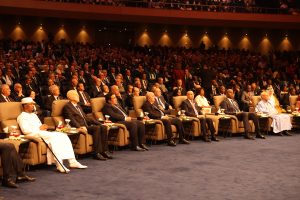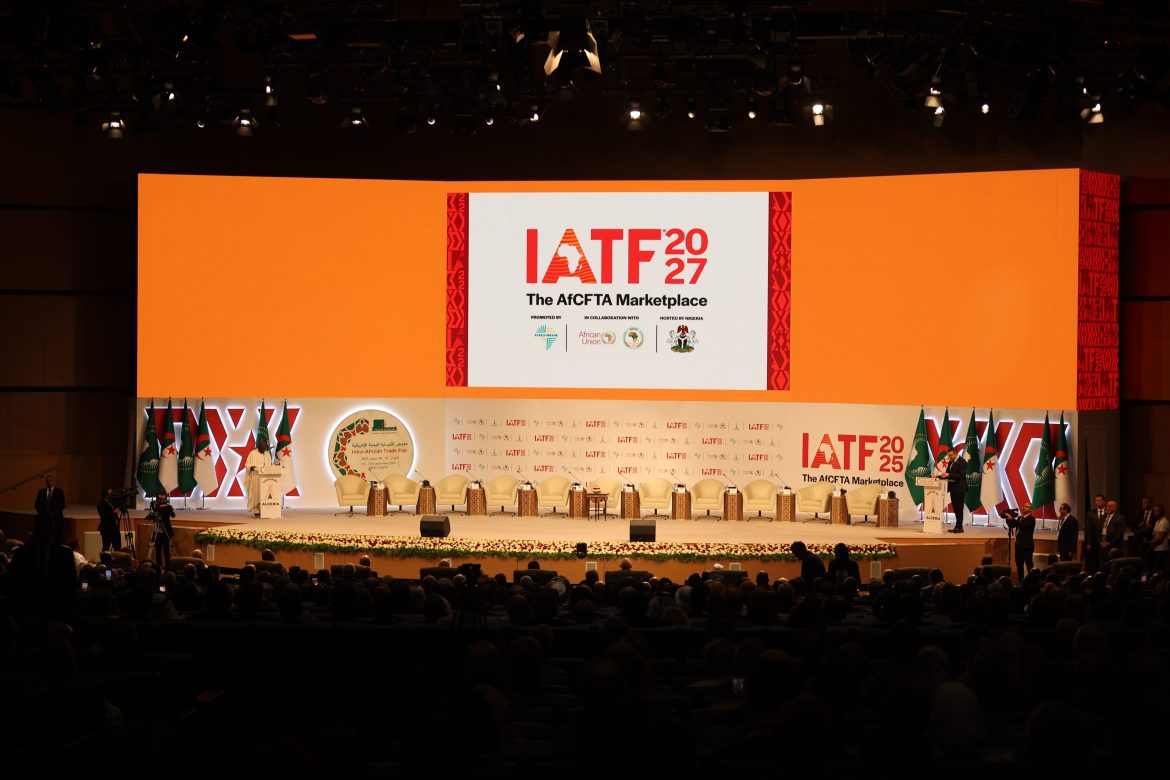Walking along CIC Algeria corridors, three words hang prominently across the entrance banners at Africa’s premier trade gathering this week: “Create. Connect. Deliver.”
Simple as they appear, these words tell the story of a continent attempting something audacious – rewriting the rules of how it does business with itself.
Inside the sprawling exhibition halls of the 4th Intra-African Trade Fair, those three imperatives come alive in ways both grand and intimate.
Here’s a Mauritanian fishing company that created a new processing facility, connected with African buyers, and delivered a 65% jump in exports. There’s a Nigerian drone innovator who created agricultural solutions, connected with Singaporean investors, and now delivers farming technology across four continents.
But perhaps nowhere is this formula more vivid than in the tale of Tanzania’s ambitious bet on homegrown electricity.
Create: When International Partners Said No
Picture this: Tanzania needed 6,000 megawatts of electricity. Seasonal flooding was devastating communities along the Rufiji River. Farmers needed irrigation support. The solution seemed obvious – build a massive hydropower project at Stiegler’s Gorge.
International financiers took one look at the $2.9 billion price tag and the complex engineering requirements, then politely declined. Insurance companies passed. Even contractors from traditional partners shook their heads.
So Tanzania got creative. At the 2018 IATF in Cairo, they found Egyptian contractors Arab Contractors and El-Sewedy Electric who were willing to take on what others considered too risky. African financiers, led by Afreximbank, arranged guarantees that international banks wouldn’t touch.
Today, the Julius Nyerere Hydropower Project stands as Africa’s largest intra-continental engineering project, delivering clean power to 60 million Tanzanians while ending the deadly floods that once claimed lives each rainy season.

Connect: The Art of African Problem-Solving
The connection part isn’t just about introducing buyers to sellers – though there’s plenty of that happening in Algiers this week. It’s about linking solutions to problems across a continent where geography and colonial-era infrastructure often made neighbors feel like strangers.
But connection also happens in smaller, more human ways. When delegates complain about having to fly through European cities to reach Algiers – a common grumble heard in conference corridors – they’re highlighting how colonial-era flight patterns still dictate African travel nearly seven decades after independence.
The solution involves both ambition and patience: opening Africa’s skies through the Single African Air Transport Market while building the digital payment systems that let a farmer in Ghana pay a supplier in Kenya as easily as sending a text message.
Deliver: Beyond the Handshake Deals
African trade fairs have a reputation for generating impressive-sounding commitments that somehow evaporate once the exhibition halls empty and delegates return home. The IATF has taken a different approach – obsessively tracking what happens after the handshakes.
Take SAMAPECHE, a mid-sized Mauritanian company that arrived at the 2023 Cairo fair looking for €12 million to expand their fish processing operations. Twelve months later, they had built their factory, added 3,000 metric tonnes of storage capacity, acquired three new boats, and boosted exports by 65%.
Or consider the Comoros Islands, where tourism had languished for decades. An IATF connection with Egypt’s El-Sewedy Group led to the Galawa Hotel Project – a five-star resort now rising on the northwest coast where the country’s legendary hotel once stood.
These aren’t billion-dollar deals that make headlines. They’re the kind of steady, practical victories that actually change how people live and work.
The Peaceful Revolution
Afreximbank’s outgoing president, Prof. Benedict Oramah, framed this three-word formula within a larger historical narrative. Speaking from the same city where African liberation movements once planned their struggles against colonial rule, he described current integration efforts as a “peaceful revolution.”
“Instead of being trained in military camps, the freedom fighters for this new battle are being trained in technical schools and universities,” Oramah told the gathering of 35,000 participants. “Instead of fighting in trenches, this battle will be fought on factory floors and tech incubation centers.”
The metaphor isn’t purely rhetorical. Algeria, which gained independence through armed struggle in 1962, is now using economic diplomacy to advance Pan-African unity. The country’s President Abdelmadjid Tebboune has positioned his nation as a bridge between North Africa, the broader continent, and global markets.
The Numbers Game
Behind the inspiring stories lie sobering statistics. Africa contributes just 2.9% to global trade despite holding 18% of the world’s population. Intra-African commerce represents only 15% of the continent’s total trade, compared to 68% for European countries.
But the trends are encouraging. Intra-African trade hit $220.3 billion in 2024, up 12.4% from the previous year. More importantly, 45% of trade between African countries involves manufactured goods, compared to just 20% for exports outside the continent. This suggests that trading with neighbors encourages the kind of value addition that creates jobs and builds industrial capacity.
The IATF itself has become a measurable success. The four editions since 2018 have generated combined commitments exceeding $160 billion, with this week’s Algiers gathering targeting $44 billion more.
The Next Chapter
As the week progresses in Algiers, the “Create. Connect. Deliver” formula faces its biggest test yet. Nigeria has been selected to host the 2027 edition, continuing the fair’s rotation across African regions. Zimbabwe will house the fair’s new permanent headquarters as it transitions from an Afreximbank initiative to an independent continental institution.
The real measure of success won’t be the deals announced from podiums, but the follow-up calls made six months from now, the factories that break ground next year, and the young entrepreneurs who discover that continental markets are large enough to support their biggest dreams.
Walking past those banner words one more time – “Create. Connect. Deliver” – it’s hard not to think they represent something larger than a trade fair slogan. They might just be Africa’s formula for finishing the independence project that began in the 1960s, this time through fiber optic cables and mobile payment systems rather than liberation armies.
The revolution, as Oramah noted, continues. It just looks different than anyone expected.
The IATF2025 runs through September 10 in Algiers, with daily exhibitions, policy dialogues, and networking sessions designed to turn the three-word formula into concrete business relationships

